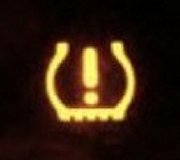This depends on which model you have. If your front struts have two bolts holes at the bottom to mount them to the spindles, it is likely "camber" is not set to specs. This assumes you don't have wheels or tires that are wider than the originals. Camber is the first angle that is set during an alignment. That is the inward or outward tilt of the wheel, as viewed from in front of the car. That must be set to specs, but it's also important that both sides be nearly the same. A tire will want to roll in the direction it is leaning. On most cars they both lean out on top just a little. The two must be close to equal so their pulls offset each other, but the left one must be set to lean a little extra to offset "road crown". All roads tilt to the right so rain will run off. A car will drift that way unless we make up for it with a little more camber on the left wheel.
Sometimes the adjustment for camber slips, either during the alignment, or after if the bolts weren't tightened enough. When one side slips, you'll usually notice a pull to the opposite side when you let go of the steering wheel, and, due to the interaction of the steering geometry, the steering wheel will no longer be centered. When both wheels are out-of-adjustment, it is more likely they were set that way incorrectly during the alignment. The additional clue to this is the tires will be worn further on their inner edges.
When camber is increased during an alignment, it will move the tops of the tires away from the struts and springs. One of the more common reasons for having problems like this is weak coil springs. That lets the car sit too low and totally changes that steering and suspension geometry. Camber can be reset to make the numbers look good on the alignment computer, but that doesn't take into account how the tires will scrub across the road as the car goes up and down over bumps. The lower control arm will be going through the wrong arcs. The fix for that is new springs, then to readjust the alignment.
Saturday, June 27th, 2015 AT 2:01 AM








